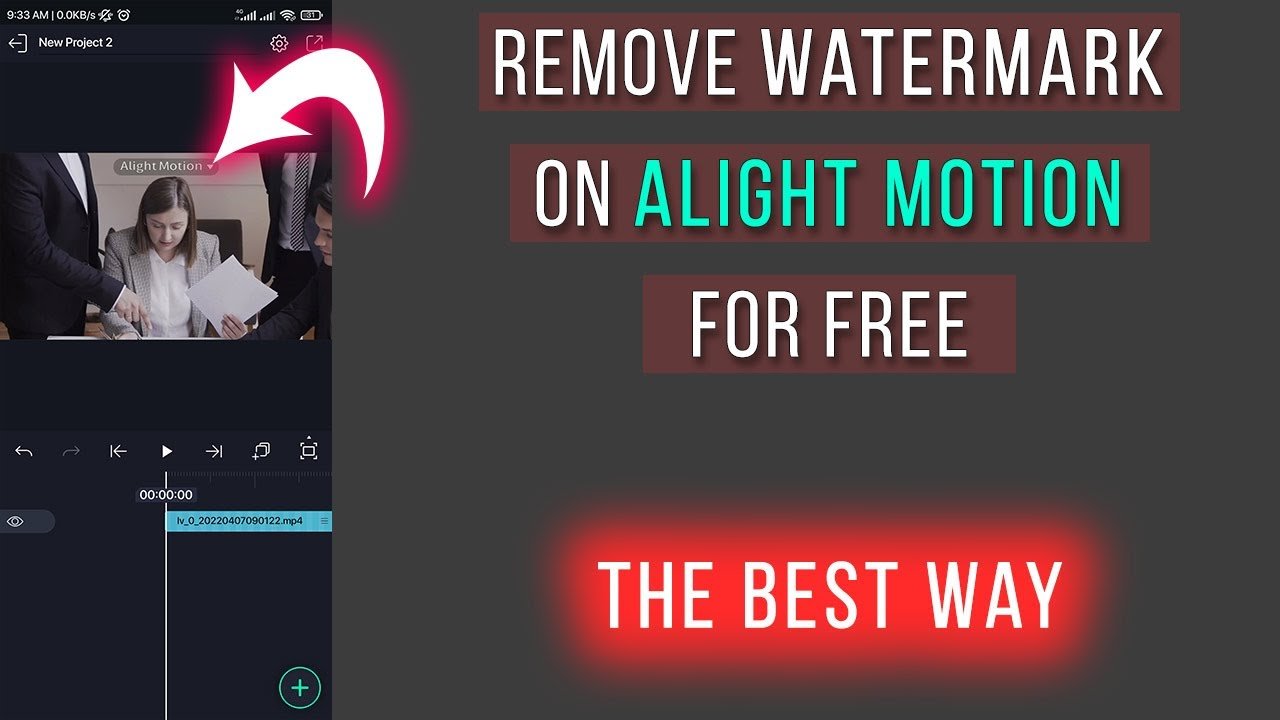Creating smooth, professional transitions in Alight Motion is easier than you think. In this blog, we’ll dive right into the steps for making your videos stand out with seamless transitions. From setting keyframes to fine-tuning motion blur, you’ll learn all the essential tips and tricks. Stay with us to master how to make transitions on Alight Motion swiftly and effectively.
Table of Contents
- How to Make Transitions on Alight Motion
- Frequently Asked Questions
- Final Thoughts
How to Make Transitions on Alight Motion
Making transitions in Alight Motion can turn your ordinary videos into extraordinary creations. Whether you’re a beginner or a more seasoned user, this guide will help you master transitions in Alight Motion step-by-step. Additionally, if you’re interested in learning how to slow down a video in Alight Motion, we’ll cover that as well. We’ll explore everything from the basics to some of the more advanced techniques you can use to add flair to your videos. Let’s dive right in!
Understanding the Basics of Transitions
Before we get into the nitty-gritty, it’s crucial to understand what transitions are and why they matter. Transitions are the effects that help you move smoothly from one clip to another in a video. They make your videos look more professional and engaging.
Common Types of Transitions
- Fade: The screen gradually goes to black or white.
- Wipe: One clip is replaced by another through a horizontal or vertical motion.
- Slide: The new clip slides into view from any direction.
- Zoom: The camera zooms in or out to transition between clips.
- Spin: The current clip spins out to reveal the next one.
Setting Up Your Workspace
Before creating transitions, you need to have your workspace set up correctly. Open Alight Motion and start a new project. Import the clips you want to use in your video. Ensure they are placed on the timeline in the order you want them to appear.
Basic Transition Techniques
Using the Fade Transition
The Fade transition is one of the simplest and most commonly used transitions in video editing. Here’s how to apply it in Alight Motion:
- Select the first clip on the timeline.
- Tap on “Effects” and choose “Add Effect”.
- Scroll down and find the “Opacity” effect.
- Reduce the opacity to 0 at the end of the clip by adding a keyframe.
- Select the next clip and add the “Opacity” effect again.
- Add a keyframe at the beginning of the clip with opacity set to 0 and another keyframe shortly after set to 100.
Applying the Wipe Transition
The Wipe transition is perfect for creating a smooth change from one clip to another. Here’s how to do it:
- Select the first clip and tap on “Effects”.
- Choose “Add Effect” and find the “Move & Transform” option.
- Set the ending position of the clip so it moves off the screen in the direction you want.
- Select the second clip and repeat the process, but this time set the starting position off the screen and end it in the center.
Advanced Transition Techniques
Creating Custom Transitions
Custom transitions can make your video stand out. Here’s a simple way to create a custom spin transition:
- Select the first clip and add the “Rotate” effect under “Move & Transform”.
- Add a keyframe at the beginning with 0 degrees and another at the end with 360 degrees.
- For the second clip, add the “Rotate” effect starting at -360 degrees and ending at 0 degrees.
This will create a seamless spinning transition between your clips.
Using Layers for Transitions
Layers can add complexity and creativity to your transitions. Here’s how to use them:
- Create a new shape or text layer above your clips.
- Animate this layer to cover the screen at the end of the first clip and reveal the second clip underneath.
- Use the “Move & Transform” and “Opacity” effects to animate the layer.
Tweaking and Fine-Tuning
Adjusting the Speed
Sometimes, you might need to adjust the speed of your transitions for better synchronization. You can do this by:
- Selecting the clip with the transition effect.
- Going to the effect settings and adjusting the keyframe timings.
Smoothing Transitions
To make transitions look smoother, you can adjust the easing of the keyframes:
- Tap on the keyframe you want to adjust.
- Select “Easing” and choose a curve that best fits your desired smoothness, like “Ease In” or “Ease Out”.
Common Issues and Solutions
Transition Looks Jumpy
If your transition looks jumpy, it could be due to abrupt keyframe settings. Make sure to:
- Spread keyframes evenly.
- Adjust the easing curves for smoother transitions.
Transition Doesn’t Appear
Ensure that the effect is applied correctly to both clips and that the keyframes are set properly.
Creative Transition Ideas
Using Elements
Incorporate elements like shapes or graphics for more creative transitions. For example:
- Use a circle shape to create a “zoom through a hole” effect.
- Animate text to transition from one clip to another.
Combining Multiple Effects
Combine multiple effects to create unique transitions:
- Use both “Rotate” and “Scale” effects for a spinning and zooming transition.
- Add color effects to create a color-changing transition.
Saving and Exporting Your Project
Once you’re satisfied with your transitions, it’s time to save and export your project:
- Go to the main menu and select “Export”.
- Choose the desired format and resolution.
- Tap “Export” to save the video to your device.
Finally, watch your video to ensure that all transitions are smooth and look good. You can always go back and make adjustments if needed. Happy editing!
Frequently Asked Questions
Are there pre-built transition templates available in Alight Motion?
Yes, Alight Motion offers a range of pre-built transition templates that you can use. To access them, tap on the “Effects” panel and navigate to the “Transitions” section. Choose from various styles like fades, slides, and wipes. These templates can be a quick way to add professional-looking transitions without much effort.
Can I create my own custom transitions in Alight Motion?
Absolutely! You can create custom transitions by combining different effects and keyframes. Start by layering different visual effects on your clips. Use keyframes to animate the properties of these effects over time. Save your custom transitions for future use by adding them to your favorites or project templates.
How do I smooth out transitions between clips in Alight Motion?
To smooth out transitions, make sure to overlap the clips slightly in the timeline. Use a crossfade or a similar transition effect to blend the clips together seamlessly. Adjust the timing and easing curves in the keyframe editor to ensure the transition feels natural and smooth. Preview and tweak until you get the desired smoothness.
Final Thoughts
To make transitions on Alight Motion, start by understanding the basics of keyframing. Experiment with different effects and presets to find what suits your project. Pay close attention to timing and smoothness. Small adjustments can significantly enhance the flow of your transitions. Regularly preview your work to ensure everything aligns well. Practice consistently to improve your skills and creativity in making transitions on Alight Motion.



